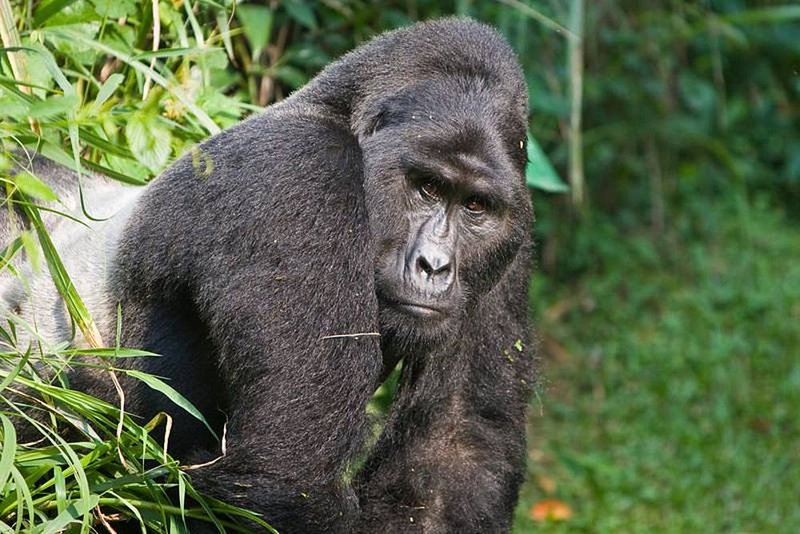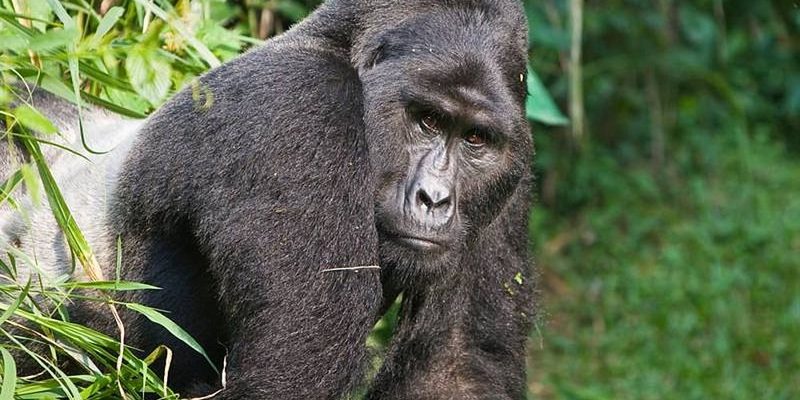
You might imagine a gorilla sitting back in the jungle, pondering the meaning of life or planning strategic moves to gather food. Sounds intriguing, right? It’s a bit like watching a child learn and grow. In this article, we’re going to explore just how smart Western gorillas really are, diving into their cognitive abilities and behaviors that showcase their intelligence. By the end, you might just find yourself with a newfound admiration for these incredible creatures.
What Defines Intelligence in Gorillas?
Understanding the intelligence of Western gorillas requires us to define what we mean by intelligence itself. It’s not just about solving puzzles or using tools—it’s also about social skills, emotional awareness, and learning from experiences. Gorillas possess all these traits.
Gorillas have been observed using tools, like sticks, to help them extract termites from mounds. This behavior shows a level of problem-solving that’s quite impressive. It’s almost like seeing a child figure out how to use a toy in a different way than intended. They learn by observing others and adapting what they see to fit their needs.
Social intelligence also plays a crucial role. Western gorillas live in tight-knit family groups, often led by a dominant male. The relationships they form are complex and can involve communication through vocalizations, facial expressions, and even body language. They understand social hierarchies and can navigate their social interactions much like we do. You might be wondering how they communicate effectively in their own world—let’s dive deeper into that.
Gorilla Communication: More Than Just Sounds
Communicating like gorillas do is both fascinating and insightful. They use a range of vocalizations, from grunts to hoots, to convey different messages. For instance, a low grunt can signal comfort or contentment, while a high-pitched scream might denote alarm or distress.
But it’s not just sounds that matter; body language is crucial too. Gorillas often use gestures and postures—like chest beating or specific facial expressions—to express emotions or intentions. Imagine a gorilla puffing up its chest to show dominance or excitement; it’s a clear message to others in the group.
Another interesting aspect of their communication is how they engage with humans. Some gorillas raised in captivity have learned aspects of sign language, showing that they can grasp complex ideas and express their thoughts when given the right tools. This kind of learning is akin to teaching a child to communicate differently.
Learning and Memory: Gorilla Education
You might think that learning and memory in gorillas could be similar to how humans learn. And you’d be right! Western gorillas exhibit remarkable learning capabilities, especially through observational learning. This means they can watch their family members or even humans perform tasks and then imitate those actions later.
For example, researchers have documented instances where young gorillas learned how to use tools by watching their mothers. This ability to observe and replicate is a sign of intelligence that not only shows understanding but also the ability to retain and apply knowledge in different situations.
In terms of memory, gorillas have excellent recall. They can remember locations where they’ve found food in the past and revisit those spots later. It’s like having a mental map of their habitat, which is vital for survival in the wild. This impressive memory aids in their ability to find food and navigate complex social interactions.
Emotional Intelligence: Understanding Feelings
Emotional intelligence is another area where Western gorillas shine. They demonstrate a range of emotions, from joy to sadness, and they show empathy towards one another. For instance, when a young gorilla is distressed, other members of the group often come to comfort it.
This nurturing behavior is similar to how humans care for one another in times of need. Think of it as a gorilla group therapy session! They touch, groom, and vocalize to support each other, indicating a deep emotional bond within families.
Research has shown that gorillas can also express grief. They have been observed mourning the loss of a family member, showing behaviors like lingering at the site where the member passed or avoiding activities they once enjoyed. This emotional depth highlights their complex inner lives and capabilities.
Problem Solving: The Gorilla’s Way of Thinking
When it comes to problem-solving, Western gorillas can be incredibly clever. They often face challenges in their environment, from finding food to avoiding predators. Their ability to think creatively is evident when they encounter obstacles.
For example, if a gorilla needs to reach fruit high in a tree, it may use a nearby branch as a lever to help itself climb or knock down the fruit. Think of it as a gorilla version of a DIY project—using available resources to solve a problem.
Moreover, researchers have set up puzzles and challenges for gorillas in captivity, showcasing their ability to solve tasks that require forethought and planning. Watching a gorilla navigate a complex task can be quite similar to seeing a child conquer a tricky puzzle—they assess the situation, try different strategies, and eventually find a solution.
Gorillas and Tool Use: A Peek into Their Skills
As we’ve mentioned, tool use is a significant indicator of intelligence. Western gorillas are known to create and use tools in various ways. They’ve been observed using sticks to fish for termites, stones to crack nuts, and even leaves to make “umbrellas” on rainy days.
This kind of behavior shows not just intelligence but also creativity. Just like a child who thinks outside the box to utilize their toys creatively, gorillas adapt objects in their environment for specific tasks. It reveals their ability to manipulate surroundings to make life easier and more comfortable.
Further studies show that gorillas can also modify tools for better efficiency. For instance, they might sharpen a twig to make it more effective for extracting insects. This level of foresight emphasizes their cognitive skills and adaptability.
Implications of Gorilla Intelligence on Conservation
The intelligence of Western gorillas has significant implications for conservation efforts. Understanding their cognitive abilities and behaviors can help in crafting better habitats and care in conservation settings. When we recognize their emotional and social needs, we can create environments that facilitate natural behaviors and enhance their well-being.
For instance, gorillas in captivity that engage in activities challenging their problem-solving skills show improved mental health. Programs that stimulate their minds—like puzzle feeders or social interactions with other gorillas—can lead to healthier, happier animals.
Moreover, public awareness of gorilla intelligence can encourage support for conservation initiatives. When people realize that gorillas are not just fascinating animals but also deeply intelligent beings with complex lives, they may be more inclined to protect their habitats and advocate for their survival.
In summary, the cognitive abilities of Western gorillas provide a glimpse into a world of intelligence that is both similar to and different from our own. Their problem-solving skills, emotional depth, and communicative abilities highlight the fact that intelligence is a broad spectrum, not limited to humans alone.
As you reflect on all this, it’s worth remembering that more research is needed to fully understand these remarkable creatures. Each new discovery enriches our knowledge and deepens our appreciation for the Western gorilla’s place in our world. So next time you think of gorillas, remember that they’re not just gentle giants—they’re thinkers, problem solvers, and emotional beings deserving of our respect and protection.

